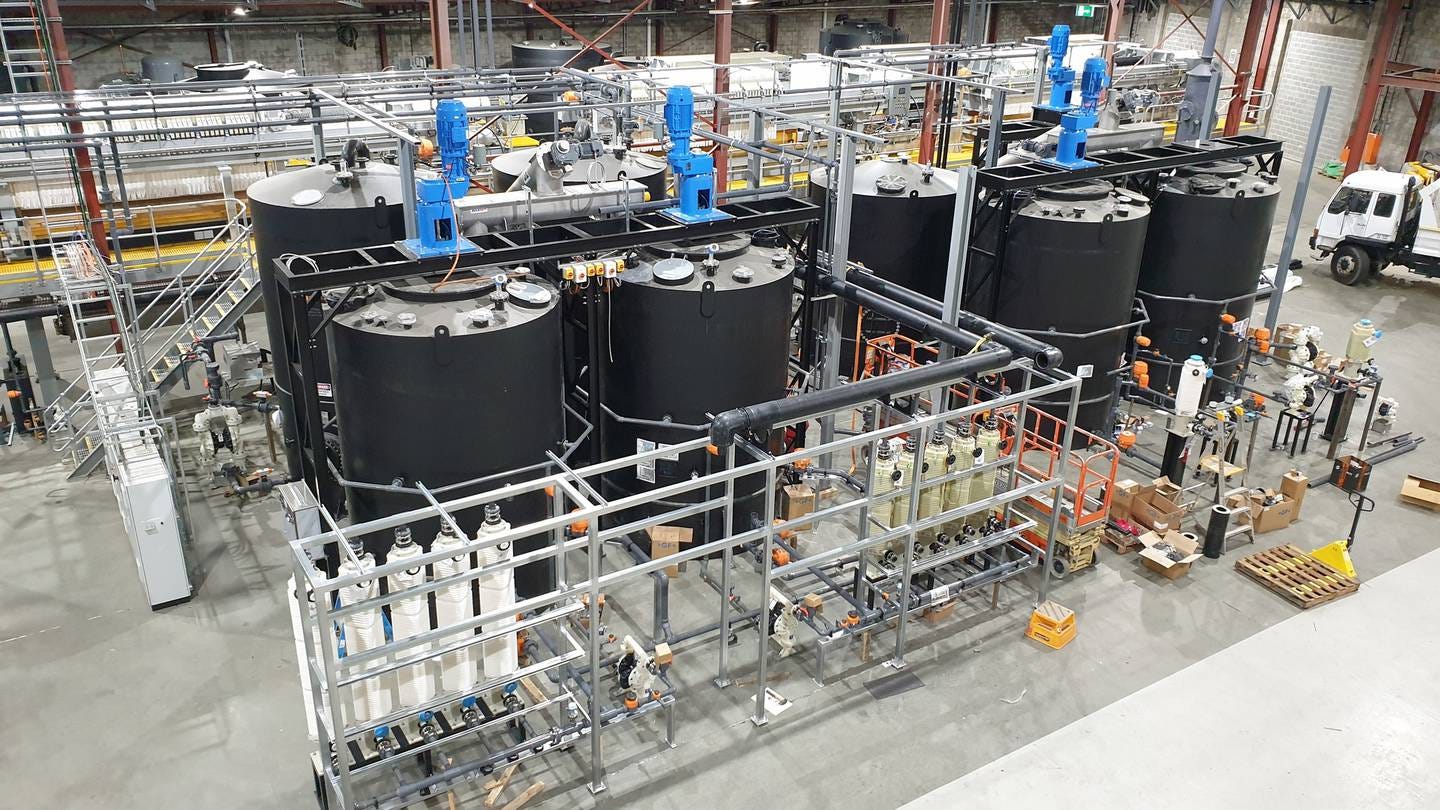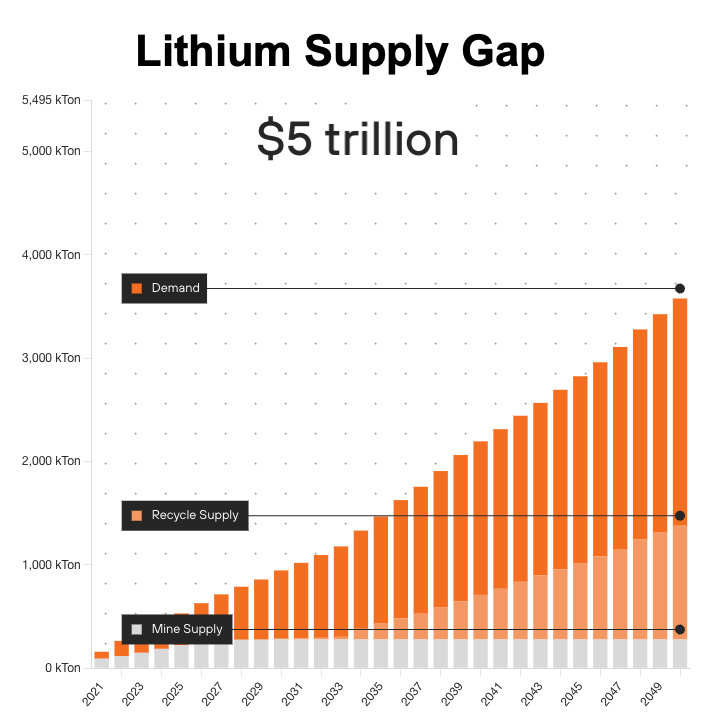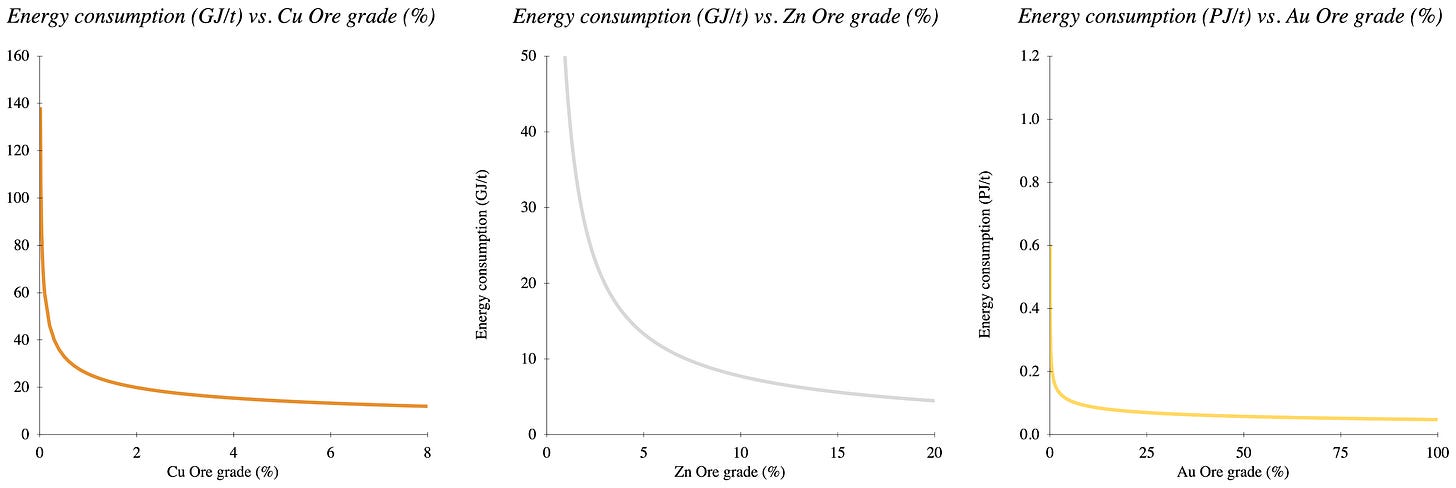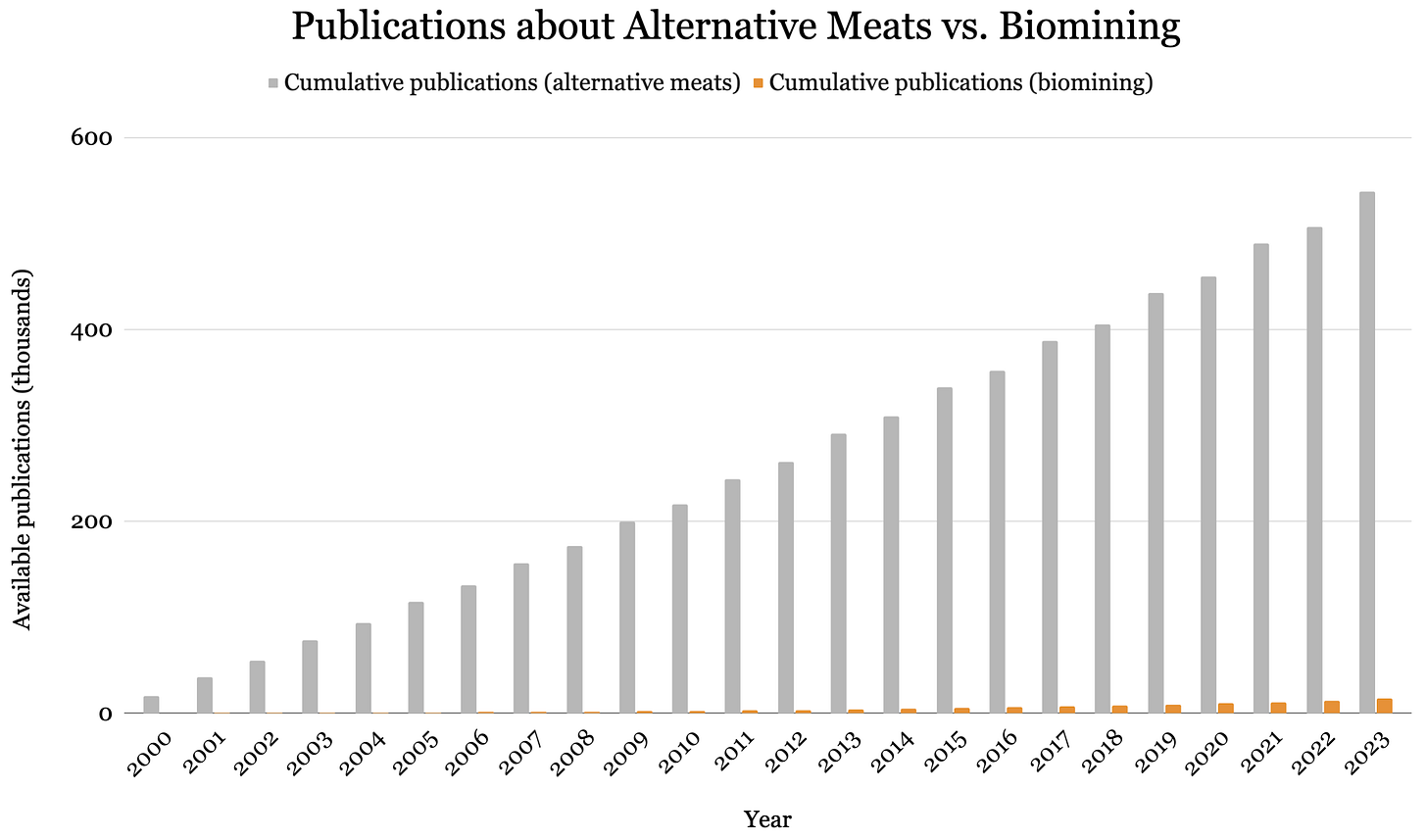An illustration of Bip the biobuddy; about to enter his mine
The information age has had a very bright dawn. From the electric vehicles increasingly populating our roads, to the miniaturized supercomputers that have taken up residence in our pockets - the past three decades have seen technology advance faster than it ever has in all of human history. However, every phone, tablet, computer, electric vehicle, wind turbine and solar panel we build necessitates the extraction of more copper, more gold, more lithium, more cobalt, and more rare earth elements (REEs).
Yet as demand soars, metal extraction does not.
High quality ore, the main resource needed to extract these metals en masse, is diminishing. And quickly. Thus far, the increase in demand has been met by using higher quantities of low quality ores.
ValleyDAO is now offering funding and support for promising biomining projects that could revolutionize the mining industry and pave the way for more sustainable metal extraction from lower quality sources (scroll down to the bottom for detailed info on the funding call and how to apply).
Why?
ValleyDAO is now offering funding and support for promising biomining research that could pave the way for more sustainable metal extraction from lower quality sources and e-waste.
The truth is that though conventional mining methods have been a steady bedrock for our rapid industrial growth, after decades (centuries, even) they are now stretching well beyond their limits. We’re struggling to extract high-quality minerals from increasingly low-grade sources, and in doing so we are leaving behind a hefty environmental footprint. And it’s local communities that are bearing the brunt of this expansion - facing displacement, pollution of water sources, and the destruction of traditional ways of life. And all the while the yield diminishes, the costs skyrocket, and the environmental toll becomes increasingly difficult to justify.
The stark reality is that as mineral source quality is diminishing, we’re finding ourselves trapped in a vicious cycle of using more energy, more chemicals, more water and causing more devastation - all to yield less and less.
But what if there was a way to break this cycle? What if there was a method that could efficiently extract the minerals we need?
We believe that biomining could be a viable solution.
But how does it exactly work?
The basics of mining
Let’s take a step back first and have a closer look at how mining works in general.
No matter the type of mining, you never usually find useful or valuable metals simply hanging out by themselves in nature. A deposit of metal is never sitting around as a solid chunk. For the vast majority of cases, metals are typically mixed up with other rocks and minerals as part of ore. Nowadays, they’re also present in garbage heaps thanks to the vast amounts of e-waste we generate. To get the important metals out and purified, you’d usually either heat up the ore or use chemical reactions to dissolve the metals from the ore into a liquid, which can then be leached out - a common way of doing so for instance is to heap up low-grade ore and pour chemicals on top to collect the leachate as it then pours out from the bottom.
Biomining on the other hand makes use of organisms - mainly plants or microbes, depending on the technique - to extract metals from various sources. It's not a new concept. Nature has been doing this for billions of years - just take a look at Acidithiobacillus ferrooxidans for example. Since the 1950’s however, we’ve been steadily learning to use it to our advantage.

Mint Innovation’s first biorefinery for recovering metals from electronics.
Broadly, there are four main processes in biomining:
- Biooxidation: Microbes remove the surrounding material, leaving behind the metals of interest.
- Bioleaching: The opposite approach - microbes target the desired substance, dissolving it into a liquid for easy separation.
- Bioaccumulation: Living cells actively take up and concentrate metals internally through their metabolic processes (before being burnt off to leave behind metals of interest).
- Biosorption: A passive adsorption of metals onto biological substrates without the use of any metabolic processes.
Within a decade of their discovery, biomining microbes were being implemented commercially to mine metals - first copper, then others: cobalt, nickel, zinc, gold, silver. Even uranium for reactors. Today, 15% of the copper and 5% of the gold on Earth is extracted this way. As interesting as that is, however - what’s the problem with conventional methods? To understand that, we need to compare forecast demand for metals against the increasing inefficiency associated with meeting that supply.
Extraction won’t meet projected demand

The demand of lithium is expected to far exceed our available supply by 2050.
Given the boom in the clean energy sector, the International Energy Agency (IEA) projects that the demand for REEs could triple by 2040 under current policies, potentially increasing sevenfold if we pursue more ambitious climate goals.
The surge in demand for these minerals is mainly due to the acceleration in the deployment of clean energy technologies as part of efforts to meet global climate goals. The IEA projects that the deployment of solar photovoltaic cells, wind turbines, and electric vehicles needs to significantly expand to meet the targets set under the Paris Agreement. Specifically, the installation of wind turbines and sales of electric vehicles are expected to grow rapidly, which in turn drives up the demand for minerals like lithium, cobalt, nickel, and REEs. However, our current mining practices are struggling to keep up.
Given the boom in the clean energy sector, the International Energy Agency projects that the demand for REEs could triple by 2040 under current policies, potentially increasing sevenfold if we pursue more ambitious climate goals.
But this is a problem. Over the past decade, global mining operations have seen a 28% drop in productivity, largely due to declining ore quality. As ore grades decrease, more material must be processed to extract the same amount of metal, leading to higher costs and greater environmental impact.
Further to this, the energy intensity of mining operations has been rising sharply. The average copper ore grade has fallen by approximately 25% over the last decade, while energy consumption for mining operations has grown by 46% over the same period.

As source quality decreases, the average energy required to extract valuable minerals rises exponentially for copper, zinc, gold and other critical minerals. Gold is several orders of magnitude more difficult to extract than copper and zinc, using up petajoules per ton (i.e. 1 million gigajoules per ton) compared to gigajoules per ton. [Source]
The environmental toll is staggering. In the United States alone, extracting minerals from lower-grade ores requires about four billion gallons of water - daily.
And even beyond all this, traditional mining faces numerous challenges beyond all this, including: ethical issues, environmental degradation - and often leads to the exacerbation of historic and global inequalities.
In contrast to all the above, biomining would reduce the amount of energy we would need to extract pure elements such as nickel, copper and REEs - and would also avoid producing the toxic byproducts of smelting such as arsenic and sulfur dioxide. And we know these methods work - having historically been implemented to extract metals from low-grade ores and waste streams, expanding the implementation of biomining would address the decreasing source quality problem with an elegant solution that both uses fewer resources and lets us get more out of our lower grade sources.
Biomining research needs funding
There's so much untapped potential in biomining, and it's especially crucial we consider more sustainable options at this critical point in our technological history. And yet despite decades of implementation, we're still behind. We understand so much less about the biomining microbe Acidithiobacillus ferrooxidans for instance than everyone molecular biologist’s favourite lab-rat, Escherichia coli.

Number of articles available on Google Scholar for each year, cumulative - from the turn of the millennium to 2024, only 16,472 articles were made available on biomining in comparison to 561,100 on alternative meats, a more mainstream field of research. [Data collected from Google Scholar]
ValleyDAO is committed to advancing biomining research and innovation. We’re looking to fund research focusing on developing more efficient biomining processes and exploring new microorganisms that have potential for metal extraction.
Key areas we're looking to fund include (but are not limited to):
- High throughput screening platforms for identifying novel biomining microorganisms
- REE extraction from secondary resources like e-waste and mine tailings
- Enzymatic solutions for mineral ore breakdown and metal extraction
- Alternative carbon sources for chemoheterotrophic organisms in REE bioleaching
- Mixed culture systems combining chemoautotrophic and chemoheterotrophic organisms
- Specialized bioprocess and bioreactor designs for biomining/leaching
- Low pulp density cultivation techniques
- Development of microorganisms resistant to toxic heavy metals, particularly cadmium, silver, mercury and uranium.
- Improved biocatalysts for enhanced microorganism-mineral interactions
- Biobased membrane for extraction
If you're an academic researcher working in these or similar fields in biomining, we want to connect with you. ValleyDAO is offering funding and support for promising biomining projects that could revolutionize the mining industry and pave the way for more sustainable metal extraction. You can apply for $50-200k in funding here. You’ll also find an FAQ section further down on the application page. We’ve made the application simple and shouldn’t take you more than 15 minutes to fill out. Deadline for the application is September 15, 2024.
If this is of interest to you or someone in your network, come join our community by joining our Discord, or else by following our socials on X and LinkedIn.
We look forward to hearing from you! 💚












